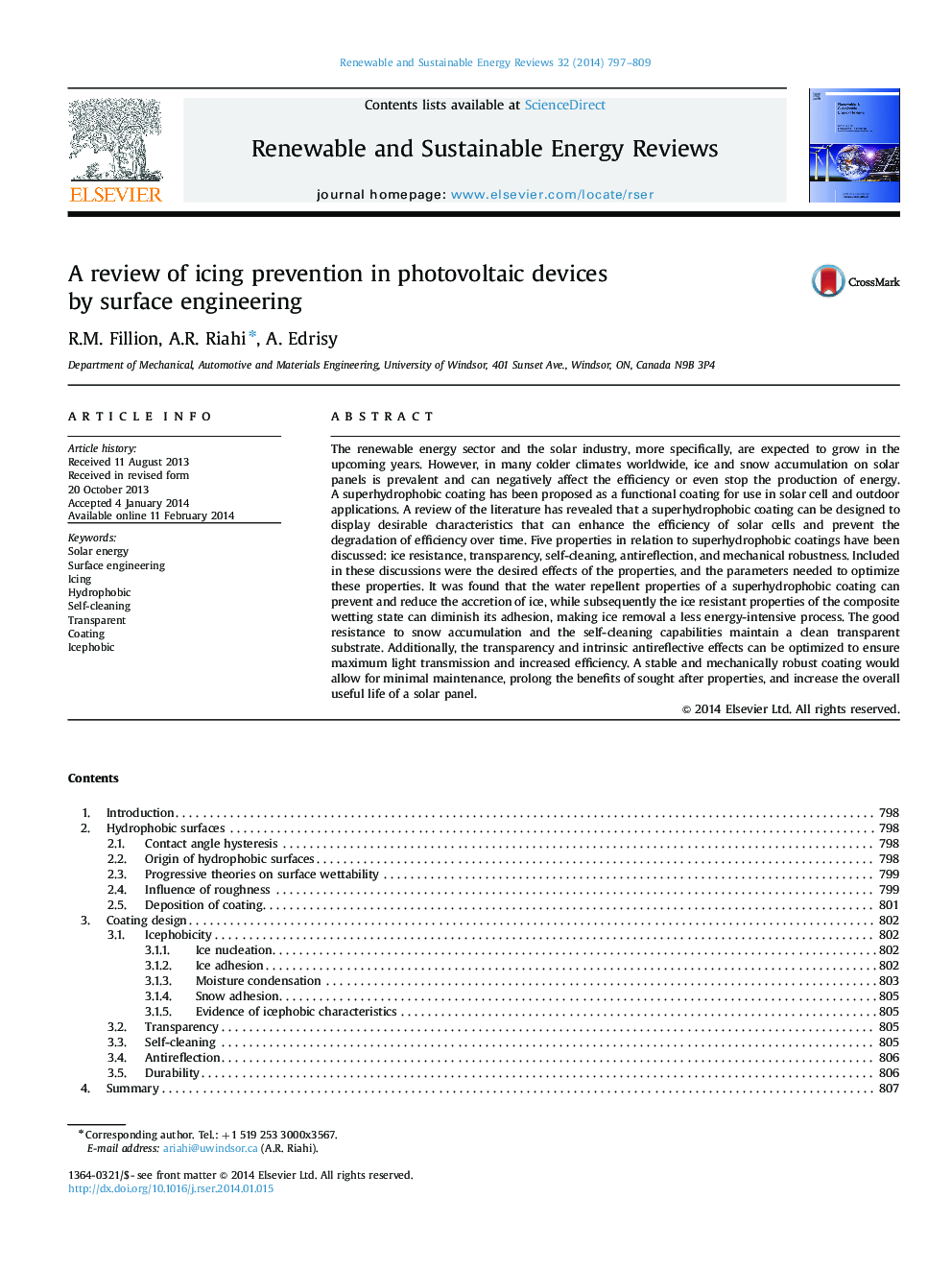| Article ID | Journal | Published Year | Pages | File Type |
|---|---|---|---|---|
| 8120597 | Renewable and Sustainable Energy Reviews | 2014 | 13 Pages |
Abstract
The renewable energy sector and the solar industry, more specifically, are expected to grow in the upcoming years. However, in many colder climates worldwide, ice and snow accumulation on solar panels is prevalent and can negatively affect the efficiency or even stop the production of energy. A superhydrophobic coating has been proposed as a functional coating for use in solar cell and outdoor applications. A review of the literature has revealed that a superhydrophobic coating can be designed to display desirable characteristics that can enhance the efficiency of solar cells and prevent the degradation of efficiency over time. Five properties in relation to superhydrophobic coatings have been discussed: ice resistance, transparency, self-cleaning, antireflection, and mechanical robustness. Included in these discussions were the desired effects of the properties, and the parameters needed to optimize these properties. It was found that the water repellent properties of a superhydrophobic coating can prevent and reduce the accretion of ice, while subsequently the ice resistant properties of the composite wetting state can diminish its adhesion, making ice removal a less energy-intensive process. The good resistance to snow accumulation and the self-cleaning capabilities maintain a clean transparent substrate. Additionally, the transparency and intrinsic antireflective effects can be optimized to ensure maximum light transmission and increased efficiency. A stable and mechanically robust coating would allow for minimal maintenance, prolong the benefits of sought after properties, and increase the overall useful life of a solar panel.
Related Topics
Physical Sciences and Engineering
Energy
Renewable Energy, Sustainability and the Environment
Authors
R.M. Fillion, A.R. Riahi, A. Edrisy,
